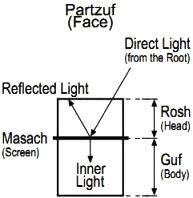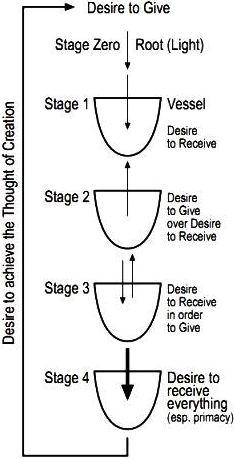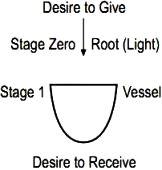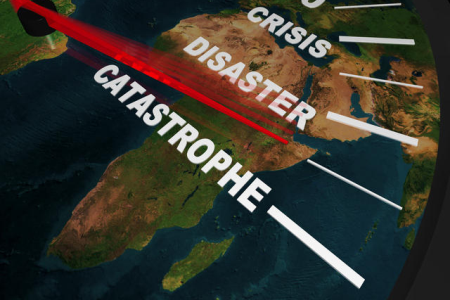From the Beginning of Creation to the Big Bang
The wisdom of Kabbalah explains, that after the initially created desire to receive goes through stages of development, forming the system of the spiritual worlds, a special Partzuf, called Adam, the primordial common soul, was created.
Although this common soul was created without free choice and without the ability to become similar to its Maker, the subsequent “breakage” of this Partzuf created the opportunity for free, independent development, to achieve the purpose creation—to become similar to its Maker.
Therefore, Adam’s shattered soul is our common origin. Being a Partzuf, Adam’s structure was a perfect replica of its parent (corrected) Partzuf. In breaking, Adam extended the structure of the spiritual worlds (worlds of bestowal) to its lowest point—ultimate reception.
In consequence, all that exists in the spiritual worlds exists in our world, as well. For this reason, the same four-stage pattern by which the stages of desire evolved, followed by the four-stage evolution of the spiritual worlds, exists in our physical world. As we explore how our world has evolved, we should keep in mind the desires that evoke and guide it.
Time, as we know it, began approximately 14 billion years ago. From the Kabbalistic, spiritual perspective, the “big bang” was the shattering of Adam’s soul. The reason we see it as a material event is that we see the world through corporeal (self-centered) eyes. If we could see it from the perspective of the force that induced this massive explosion we call “the big bang,” we would see it as an outcome of Adam’s attempt to receive using the last, and greatest desire.
What Is the Difference between Survival of the Fittest in Darwinism and in Kabbalah?
As the original desires evolved in stages, their mundane parallels appeared and corrected one at a time, from the easiest to the hardest. Now, as each desire manifests itself in our universe, Nature, which is synonymous with the Creator, must “teach” it to work so that it contributes to the well-being and sustainability of the universe.
Continue reading “If You’re a Human Being, then You Can Change the World You Live In”





